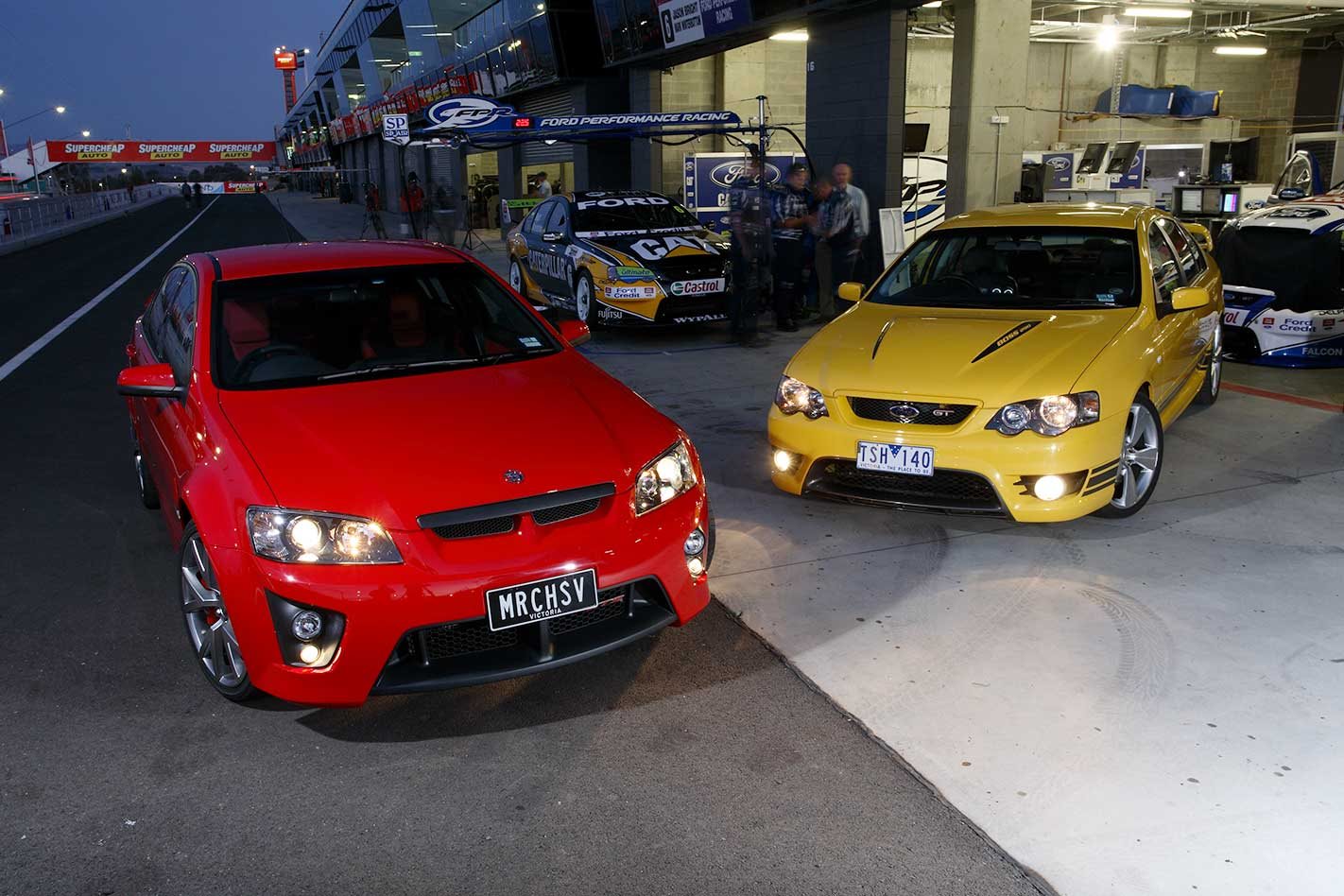Mount Panorama is Australia’s answer to the Nurburgring and has etched itself into our culture as the battleground for the iconic Ford vs Holden rivalry that defines Aussie car culture. So what better way to get to this year’s Bathurst 1000 than in two of the brands’ hottest examples on the road today?
This feature was originally published in MOTOR’s December 2006 issue
We were mostly interested in getting behind the wheel of the 307kW GTS rocket ship that HSV has shaped from the new VE Commodore and finding out exactly what $77,680 (as tested) buys us.
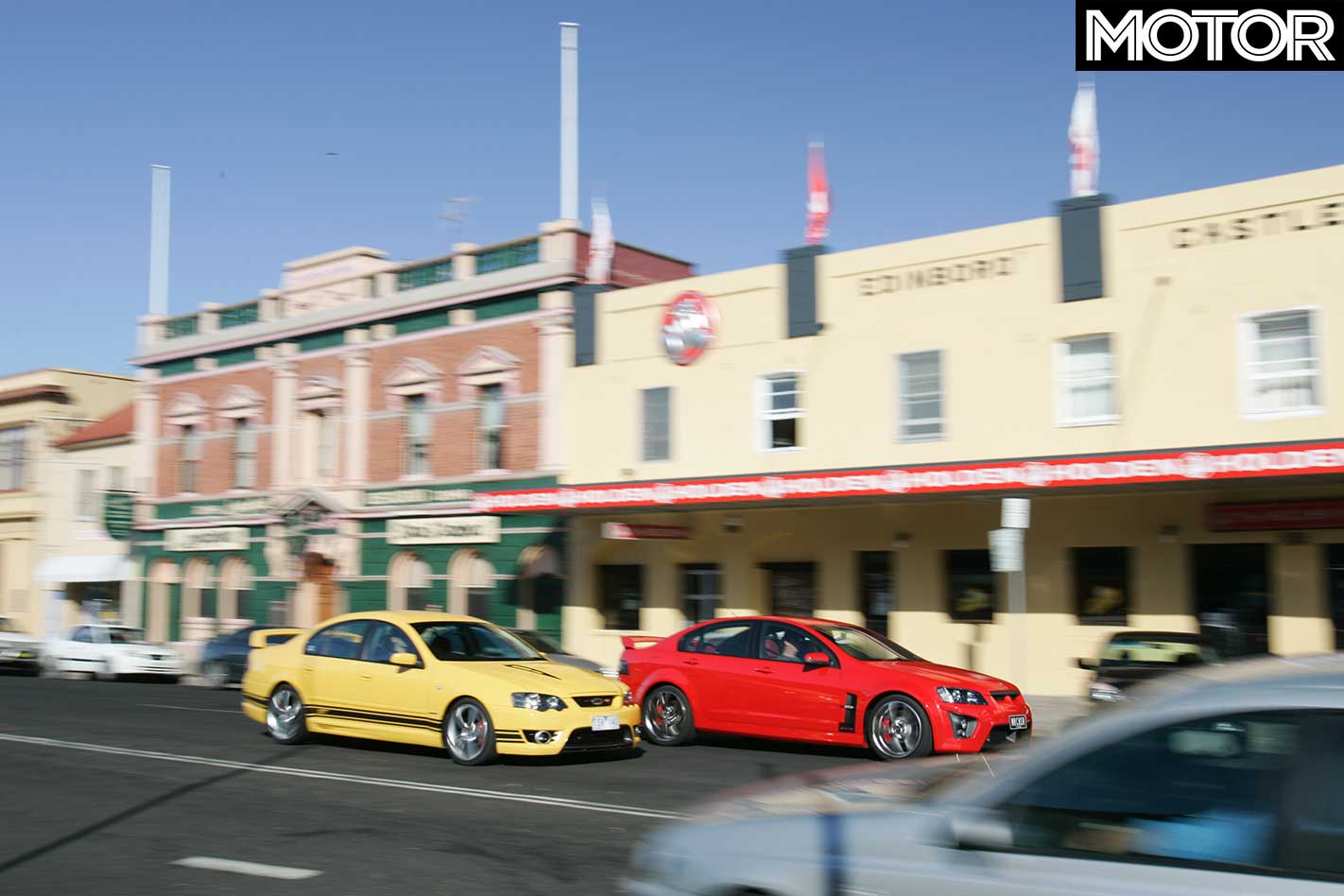
Before we headed off on our trek across the Blue Mountains, there was an early morning detour to Oran Park for a couple of quarter-mile runs to see if the extra ponies HSV extracted from the 6.0-litre LS2 V8 could shoot it on a sub five-second sprint to the speed limit.
HSV is claiming 5.05 seconds to the 100km/h – a figure set by one of their technicians – and they’re offering a bottle of champagne to the motoring scribe who can beat it. Well, we were keen for a crack and the Oran Park front straight is skewed our way, because the second half slopes away gently. We were also keen to see what Aussie ingenuity had delivered in this highly-anticipated car.
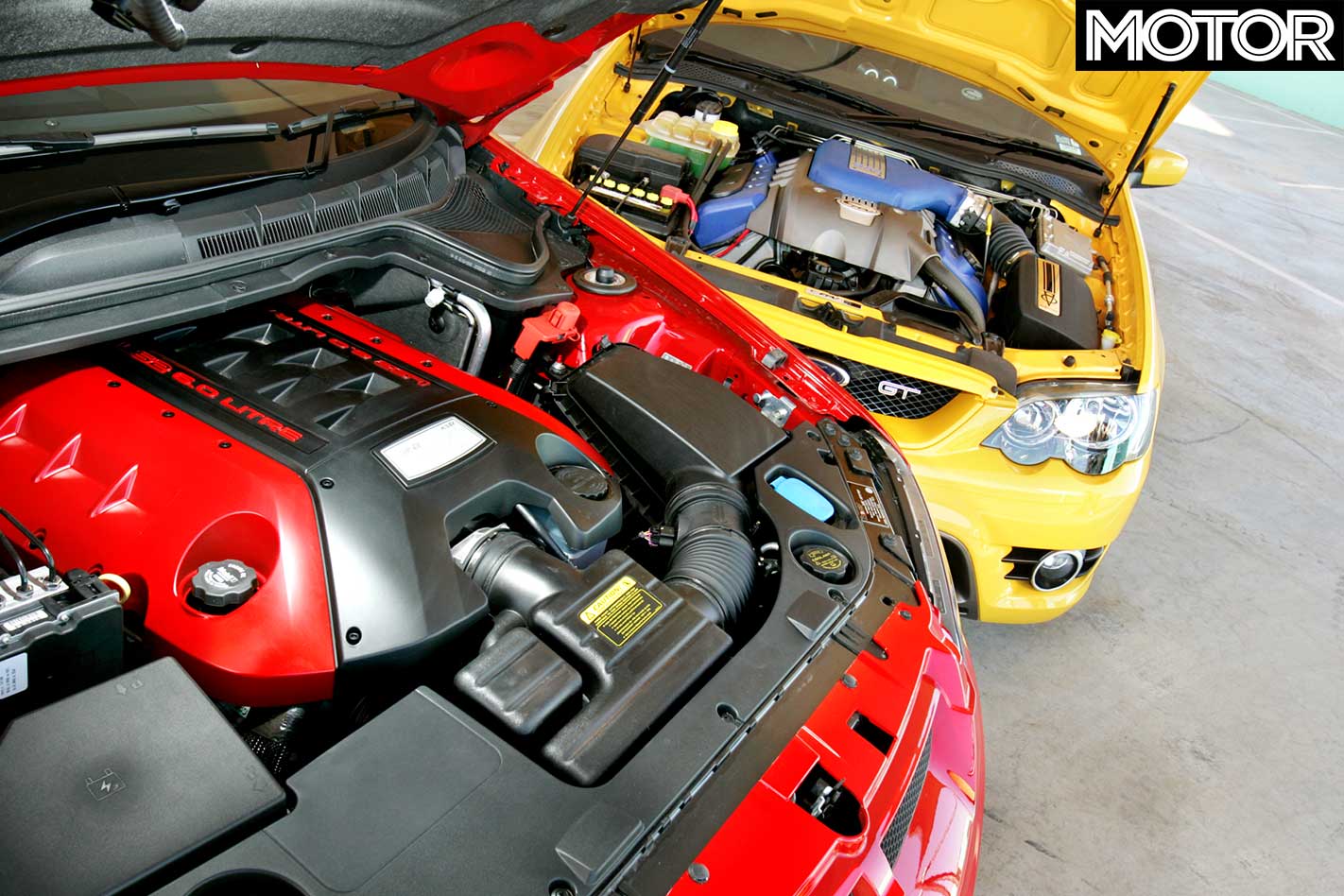
It’s the first full-house GTS from HSV, with previous versions featuring hand-built engines by American Corvette tuner, Callaway. That means it shares the same all-alloy, pushrod-driven LS2 (that’s exclusive to the Clayton camp) with the ClubSport and Senator, and they all have an extra 10kW over the VZ variants.
This is eked out with locally-made headers and fine tuning of the engine’s computer module, and hits peak power at 6000rpm, while maximum torque, which has risen from 530Nm to 550Nm, comes in at 4400rpm.
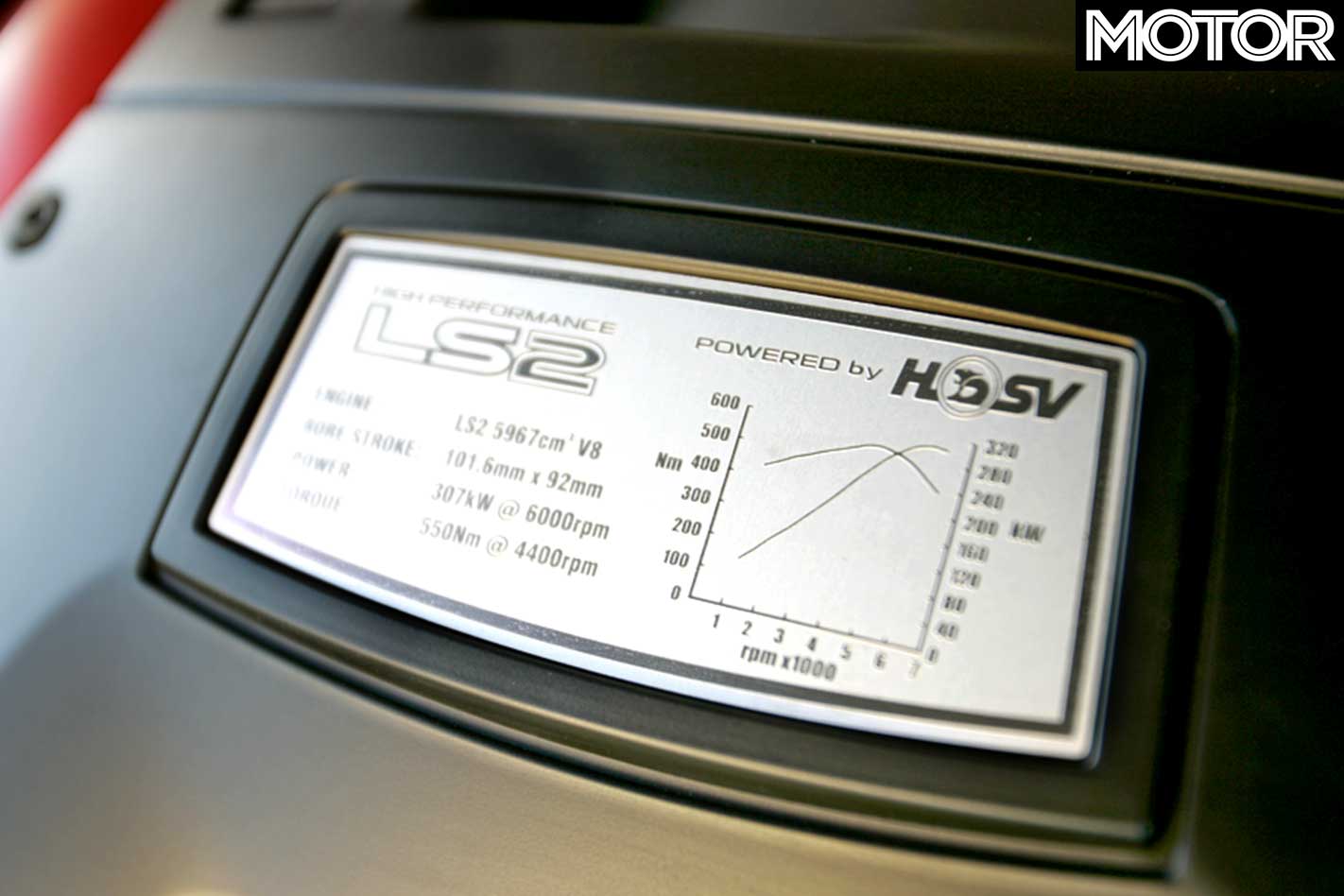
Those figures leap-frog FPV’s offerings. Both the GT and GT-P have a claimed 290kW and 520Nm, but its 5.4-litre Boss V8 hasn’t seen any changes since the BA model was introduced in 2003. It still has the same long-stroke cast-iron block fitted with all-alloy quad-cam cylinder heads featuring four valves per cylinder, which, unlike the Mexican-made LS2 in the GTS, is built in Australia at FPV’s Campbellfield headquarters.
At Oran Park, launching the GTS was to be a simple matter of pushing the sport button in front of the gear selector, dialling in 1500rpm, releasing the brakes and mashing the accelerator. Or so HSV says on their cheat sheet, designed to assist us journos to beat their performance times and claim the champers. But we found 1500rpm to be a little loud for a good launch. 1200-1300rpm seemed to be closer to the mark, and delivered us a 5.4sec to 100km/h and a 13.4sec quarter.
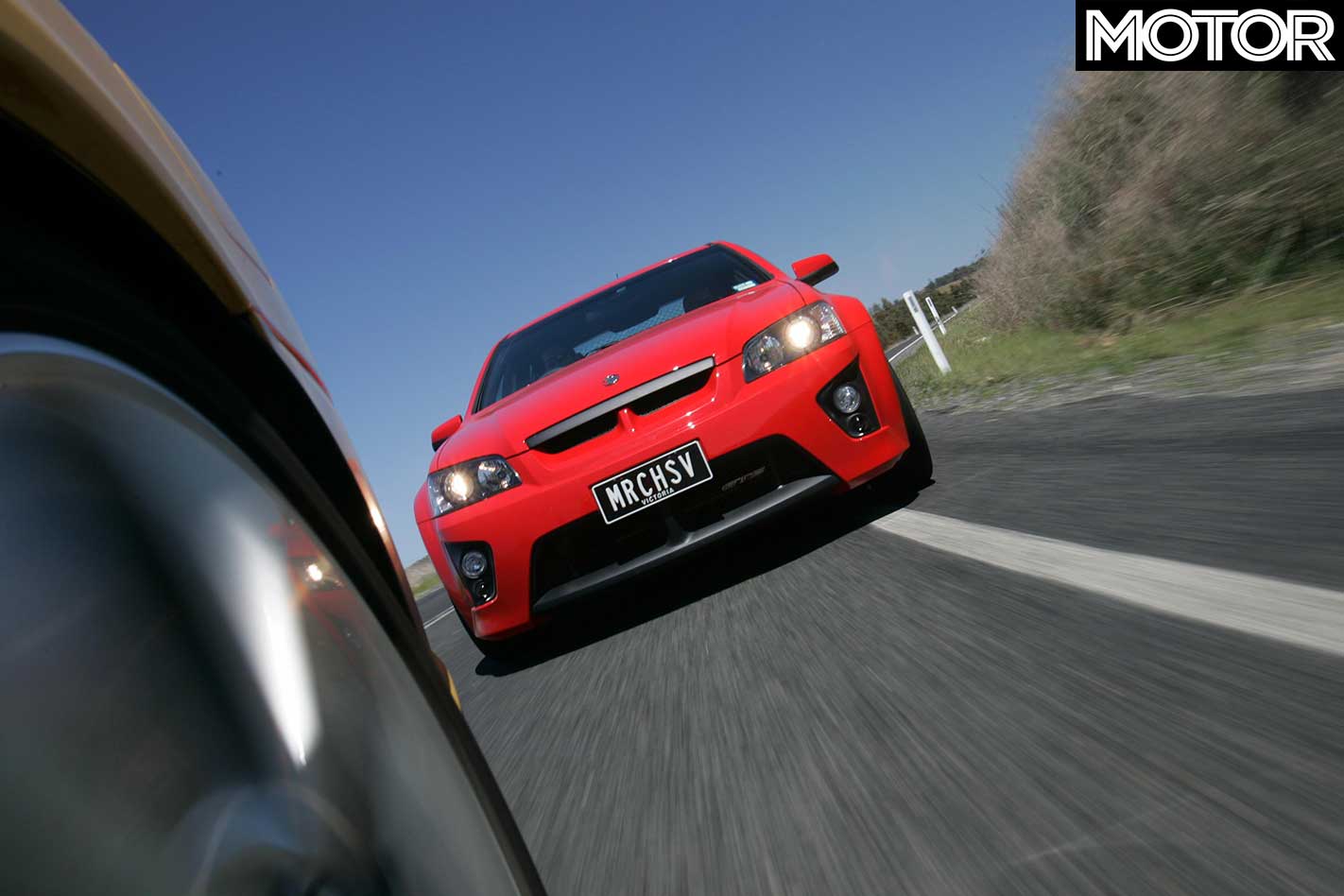
The big V8 pulls hard until about 4500rpm, but then softens off slightly – perhaps with only 1100km on the clock it was a little tight and for now, we’ll give it the benefit of the doubt. But this time we miss out on the bubbly.
The HSV’s tentativeness gave the GT a bit of a sniff, and with more than 12,000km of hard use on the clock, it felt right in its sweet spot. Working against it in this comparison is the smaller-capacity quad cam Boss V8 that struggles to shift the greater mass of the GT off the line.
But once it gets going and the sublime ZF 6HP26 does its job, the Boss comes alive, especially at about four grand where the cams really kick along with a raunchy exhaust note from the twin pipes. The big GT rose to the challenge, marching down the quarter in 13.9 and taking just 5.6sec to reach 100km/h – the fastest times we’ve ever run in a GT.
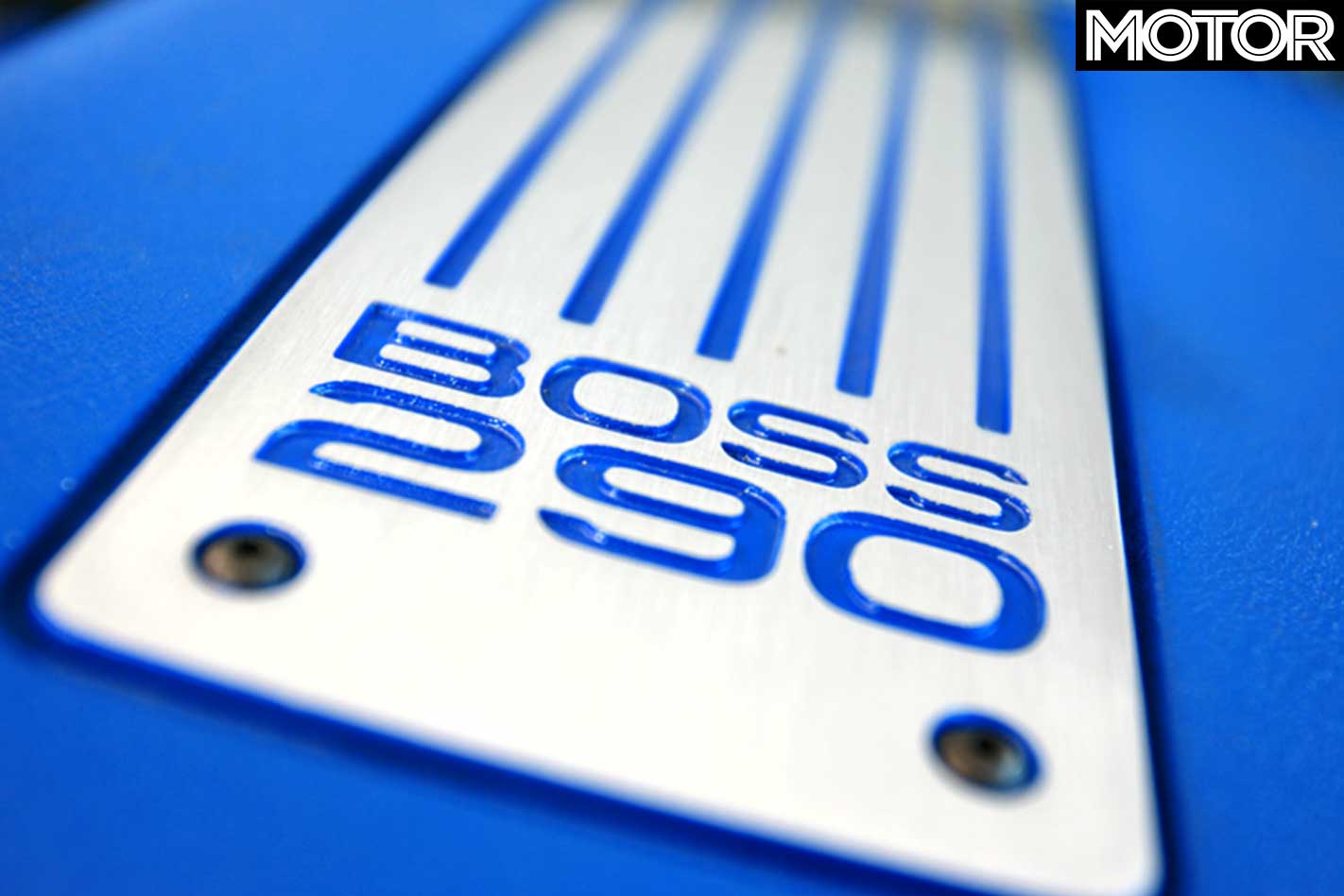
However, it’s unlikely that you’ll spend much time on the track in your GTS or GT – they’re designed to munch miles with a nice, fat V8 burble in the background. And Bathurst is still five hours away. So we head down the backroads of western Sydney, then onto the Great Western Highway to climb up and across the Blue Mountains, with a quick fang out on some nearby twisty stuff for good measure.
The first stage, in the stop-start heavy Sydney traffic, is a true test of economy – a test the GT is never going to win. It didn’t get any better going up the mountain and by the time we got to the famous Hydro Majestic hotel in Medlow Bath, its trip computer was reading 15.1 litres/100km. Comparatively, the GTS’s computer read just 12.3 litres/100km, despite its bigger capacity engine.
However, the GT does score extra points for its ZF auto which swaps cogs almost invisibly, and is a sweet match to the 5.4 Boss V8. It has to be, as you find yourself shifting a lot to keep in its narrow powerband (between 4000 and 6000rpm).
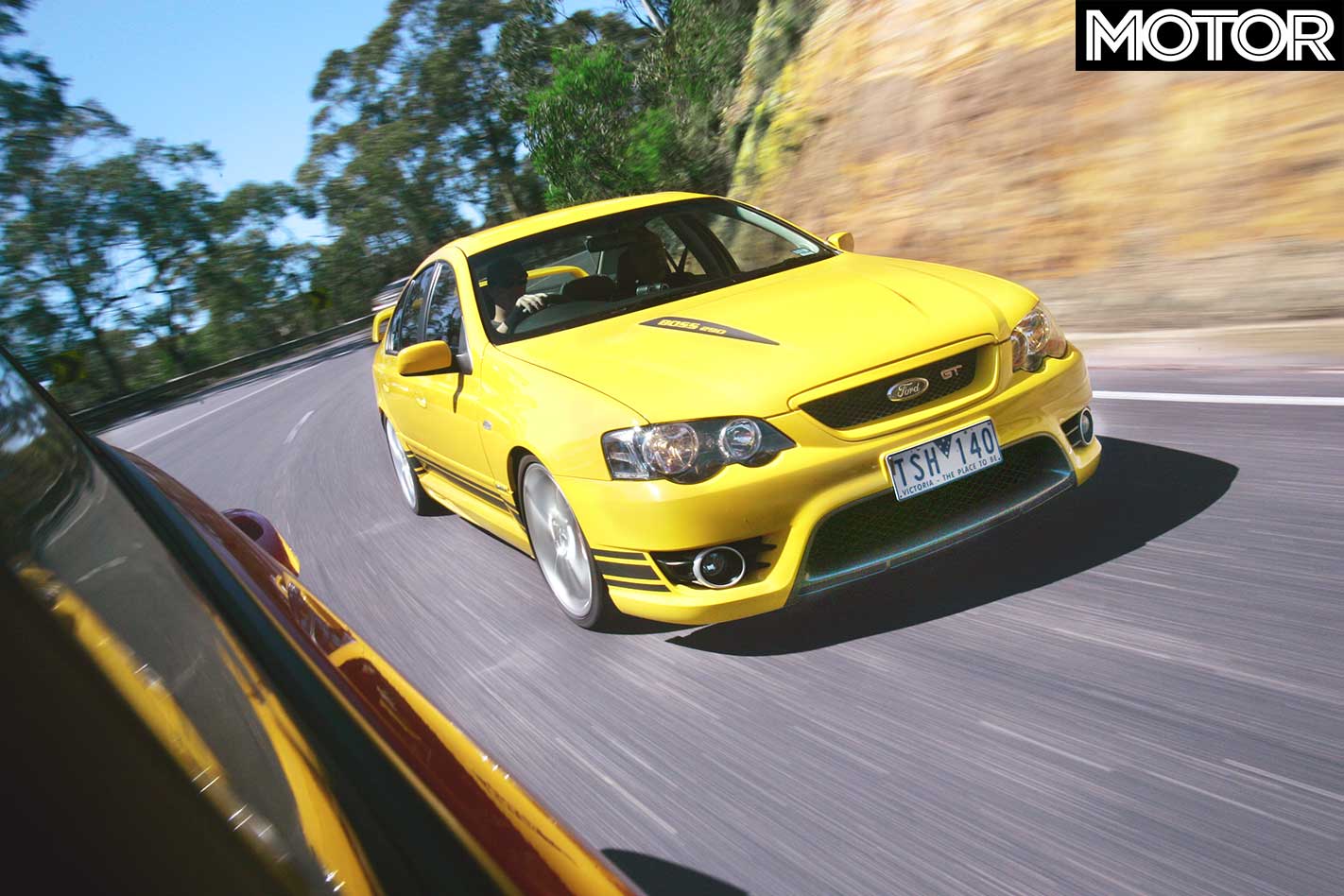
The GTS has a much wider power spread, but using the 6L80 auto in manual mode is an exercise in frustration. Where the GT will let you change down into higher revs, the GTS will ignore your yanking on the shifter until it sinks well into the lower mid-range. Not much fun when you’re looking for a storming launch out of a mid-to-low speed corner.
The GT also comes out in front with its sublime ride on open country roads. While it’s more prone to road noise from its Dunlop Sport Maxx tyres, it rides over irregularities in the road better than the GTS.
Sure, a pothole is still going to crash through into the chassis – remember, it is on 19-inch wheels – but it’s well balanced on gentle, flowing roads. The GTS still feels too stiff for everyday driving and, even with the magic of the Magnetic Ride Control suspension, it doesn’t seem to have the same level of control over small corrugations.
The GTS springs into a different league when the road smoothes out, and the GT works hard trying to keep up. The momentum from the extra mass of the tall iron block V8 can be felt laterally and longitudinally, making it more of a handful in corners.
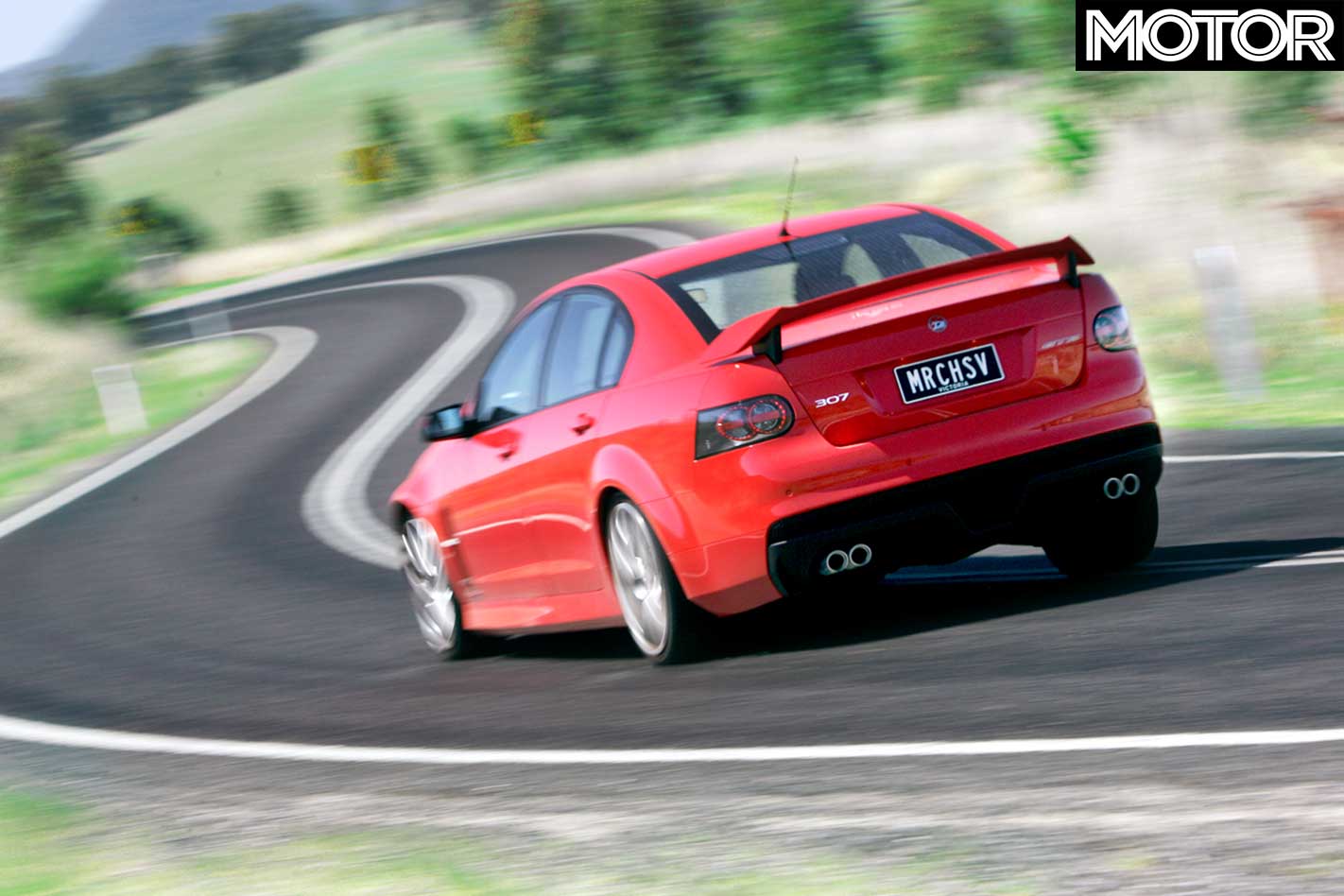
The GT moves around a lot in comparison to the HSV. It feels less planted on turn-in, as the rear is prone to stepping out a little, and then requires attention while the power is fed in on corner exit. It’s an exercise in minute steering and throttle adjustments to get it to drive off the corner as well as the HSV, that in comparison, fires off unflustered.
Even with the MRC track setting turned off, the GTS hunkers into the road with superior balance and grip. It sits flat, slices into the corner more precisely and hangs on with noticeably more mid corner speed.
Select ‘track’, and the GTS steps up another notch. On a tight, closing-radius third-gear corner – which was second in the GT – you can confidently throw the GTS in and feel the damping get stiffer and stiffer as the cornering loads increased.
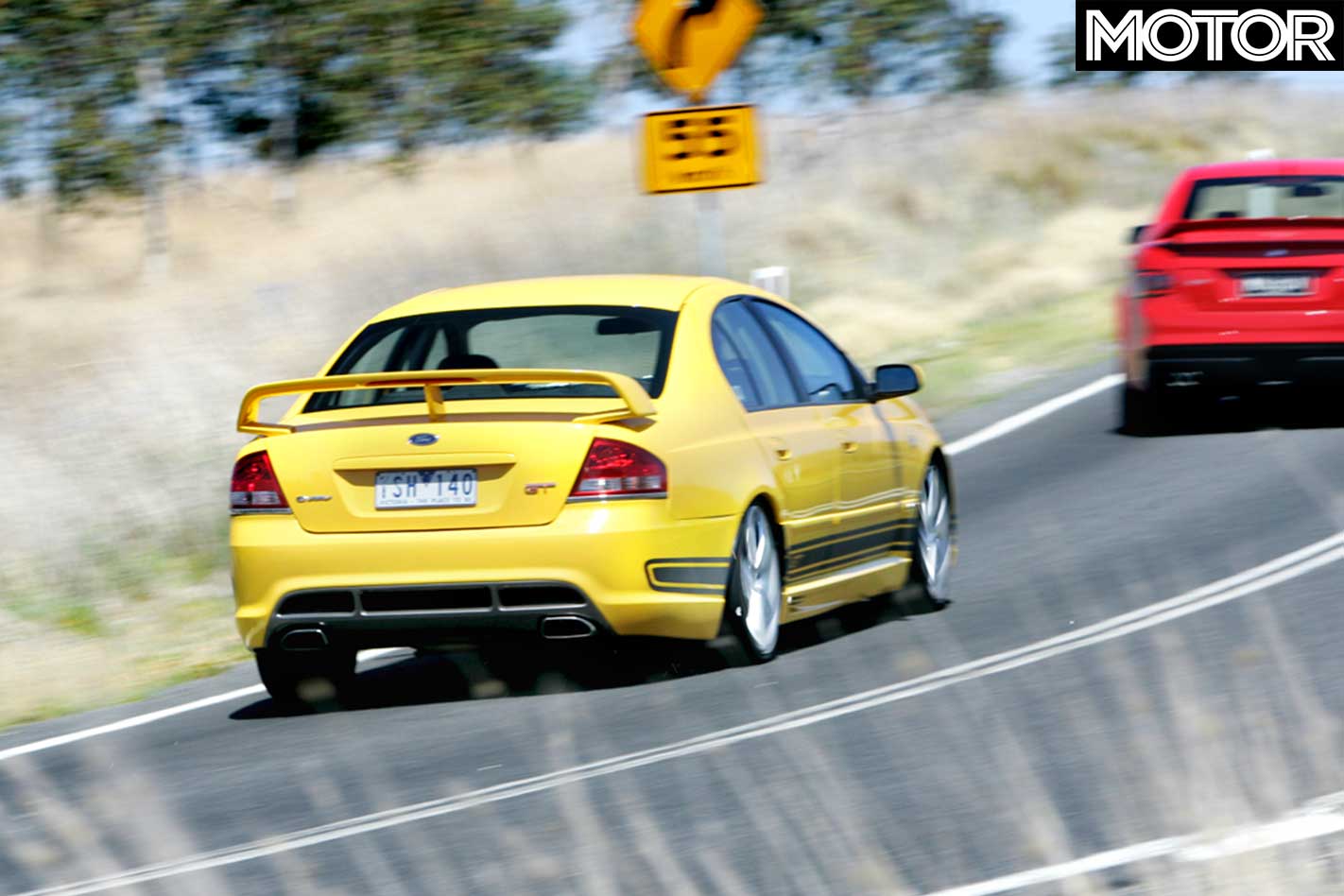
It’s surprising how hard you can steam into corners, turning in while trail-braking to keep some weight over the front tyres, and then roaring out the other side. The front grips tenaciously on turn-in, and the rear stays hooked up on exit with nary a slide.
Bigger boots on the back help provide this sure-footed neutral balance, with the only negative aspect being severe steering kickback generated by a series of mid corner bumps. The GT sailed across them with ease.
But hauling these two beasts down from top speed are two surprisingly similar set-ups: the GT featuring four-piston front Brembo calipers and single piston rear, while the GTS has AP Racing four-piston calipers all ’round. The GTS also has slightly bigger rotors, and while both have ABS, the GTS also picks up the added security of Electronic Stability Program.
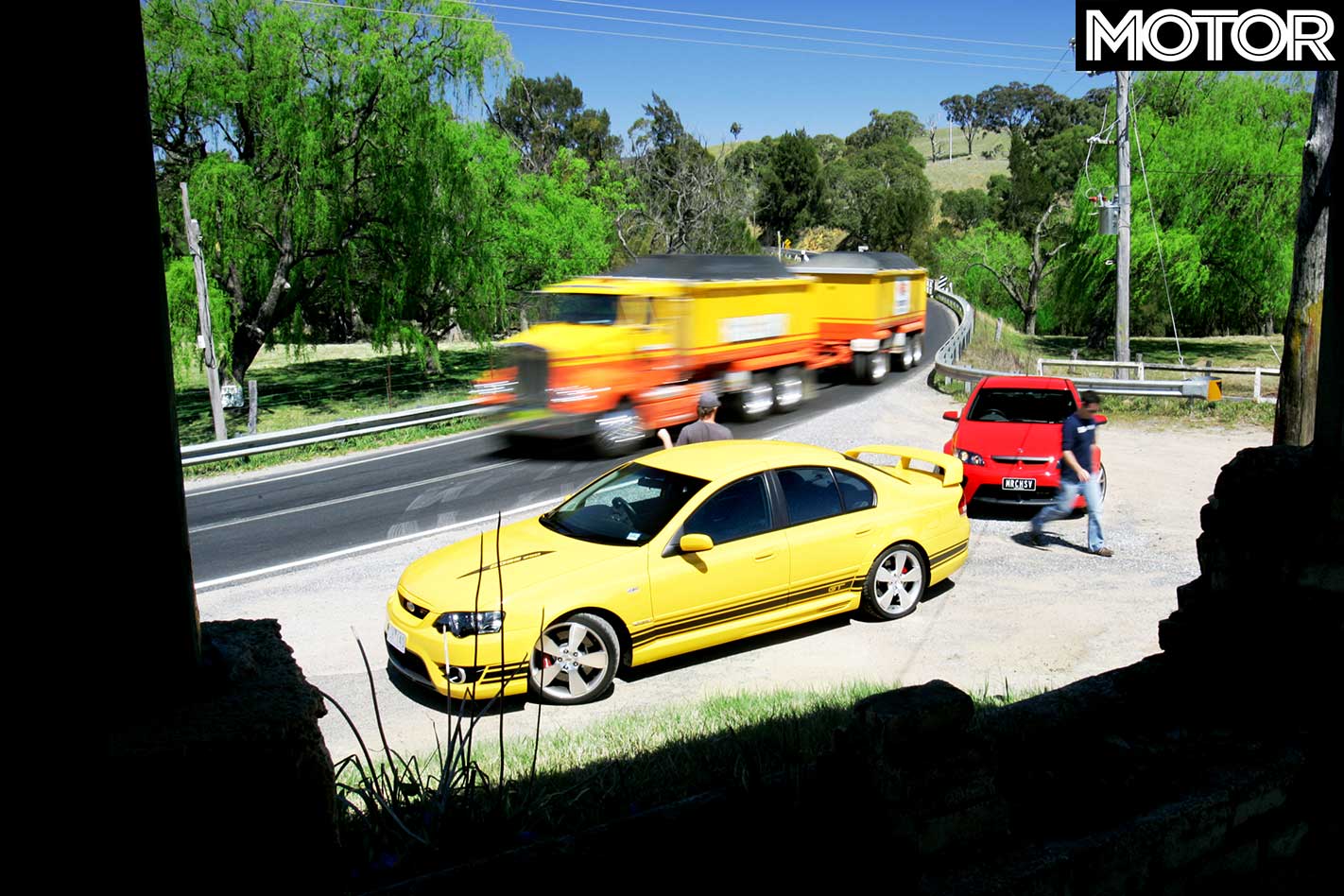
The FPV brakes are more than adequate and have no problems pulling up the GT time after time, but they don’t have the progressive feel or overall power of the HSV anchors. There’s not much in it, but the HSV provide just that extra dash of confidence.
The GT is more comfortable than the GTS, the ZF self-shifter is smarter and smoother and it scores points for price in this comparison, but the GTS is a much more advanced package. The Clayton clan has developed a hugely capable car that’s as close as you could get to a road-going V8 Supercar, with a magical 6.0-litre V8 that feels like it could belt around Bathurst all day.
| u00a0 | HSV GTS | FPV GT |
| Body | four-door sedan | |
| Drive | rear-wheel | |
| Power | 307kW @ 6000rpm | 290kW @ 5500rpm |
| Torque | 550Nm @ 4400rpm | 520Nm @ 4500rpm |
| Compression | 10.9:1 | 10.5:1 |
| Kerb Weight | 1846kg | 1855kg |
| Power-to-Weight | 166kW/tonne | 156kW/tonne |
| Transmission | Six-speed automatic | |
| Length/width/height | 4943/1899/1468mm | 4944/1864/1470mm |
| Wheelbase | 2915mm | 2829mm |
| Track | 1592mm (f), 1590mm (r) | 1553mm (f); 1586mm (r) |
| Suspension | struts, coil springs, anti-roll bar (f); multi-links, coil springs, anti-roll bar (r) | double wishbones, coil springs, anti-roll bar (f); multi-links, coil springs, anti-roll bar (r) |
| Brakes | 365mm vented/grooved discs, four-piston calipers (f); 350mm vented/grooved discs, four-piston calipers (r); ABS, ESP | 355mm vented/cross-drilled discs, four-piston calipers (f); 330mm vented/cross-drilled discs, single-piston calipers (r); ABS |
| Wheels | 20 x 8.0-inch (f); 20 x 9.5-inch (r) | 19 x 9.0-inch (f); 19 x 9.0-inch (r) |
| Tyres | Bridgestone Potenza 245/35R20 (f), 275/30R20 (r) | Dunlop SP Sport Maxx 245/35ZR19 (f & r) |
| Price | $74,990 ($76,990 as tested) | $62,210 ($67,150 as tested) |
Home Turf
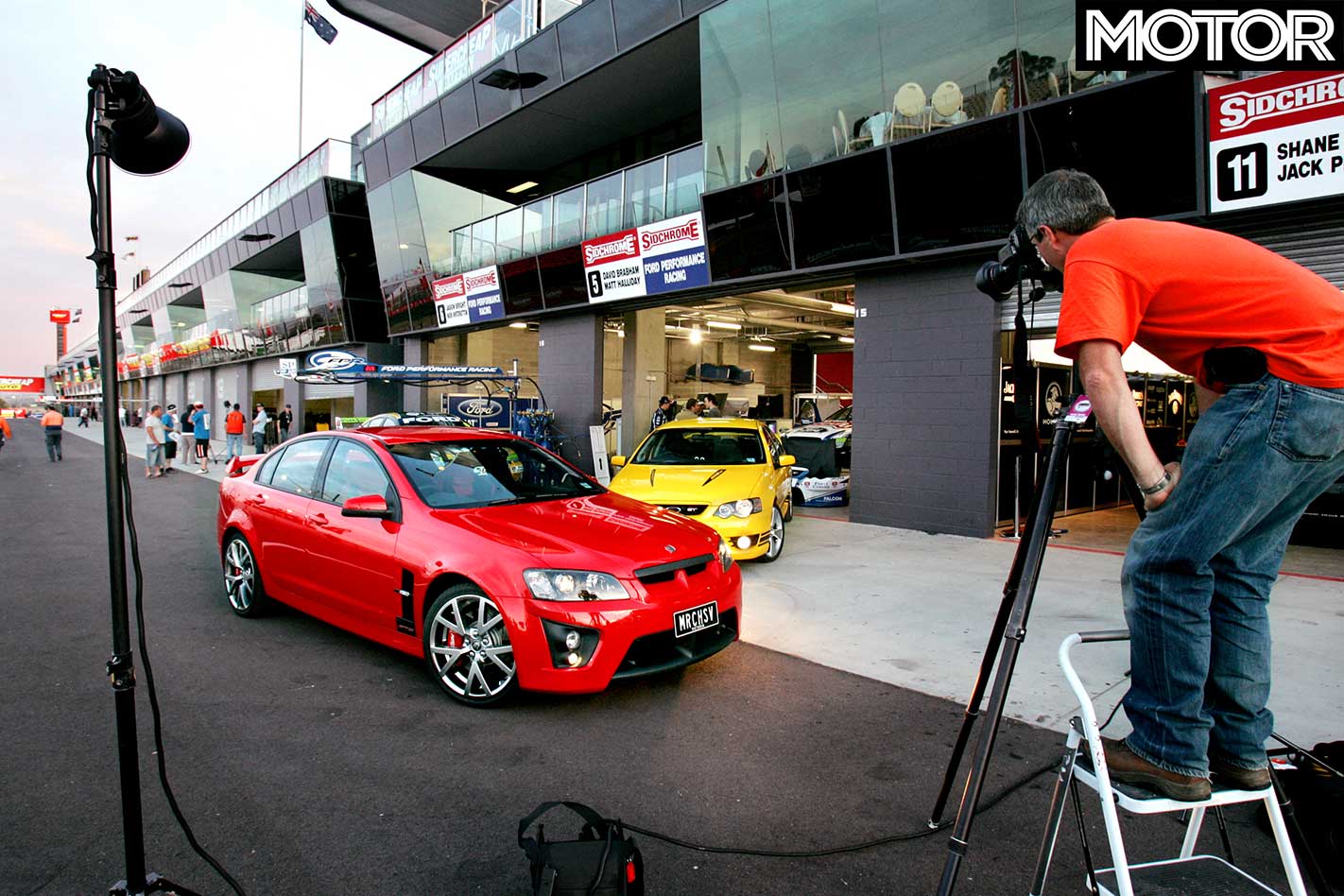
HSV and FPV owe their livelihoods to Mount Panorama. The local performance car segment was essentially born from Holden and Ford’s quest for success in the Bathurst 1000.
As the two companies battled for supremacy in the early years of the great race, they both started special vehicles operations to create unique vehicles designed to handle the rigours of racing. If it wasn’t for Bathurst, we may never have seen the likes of the Falcon GT, Monaro GTS 350, Torana XU-1 and Torana A9X.
Gradually, the race has evolved from showroom cars to dedicated race cars, loosely based on production vehicles.

